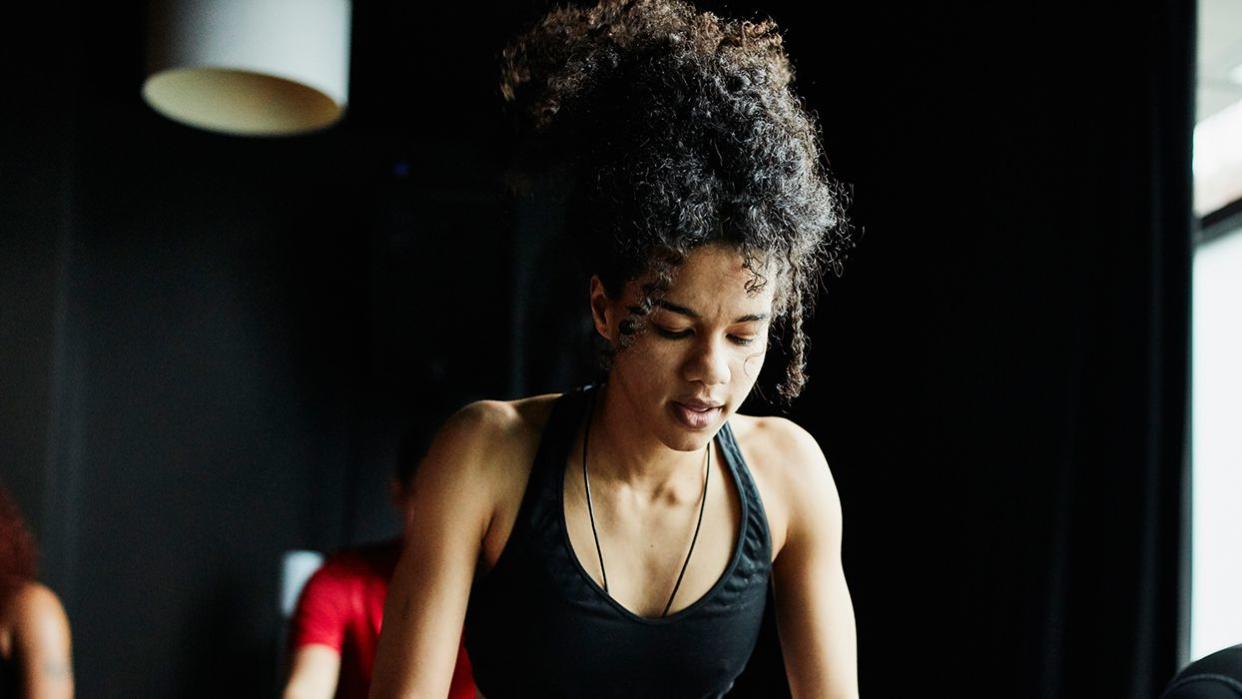The One Cycling Mistake This Instructor Wants You to Stop Making

Thomas Barwick/Getty
When I first hopped on an indoor cycling bike 10 years ago at SoulCycle, I would vice-grip the handlebars — especially during tough intervals when I had to up both resistance and speed — in an attempt to somehow generate more power.
Little did I know that I was putting my neck, wrists, and lower back at major risk, not to mention making every movement during my ride far less effective. Years later, I'm now an instructor myself with CycleBar. After leading more than 100 classes, I've discovered that my previous cycling mistake of gripping those bars too tightly is also the most common mistake I see among other riders. (P.S. Here are 5 more blunders you might be making on the bike.)
But to fix this issue goes beyond just listening up on your grip, it often actually starts with an improper bike setup. For knee and back safety, you can use your body as a measuring stick. A few good rules of thumb to follow for proper set-up:
Align your seat to be at about the same height as the top of your hip bone. Your knee should be just barely bent at the bottom of the pedal stroke.
Adjust your handlebars to be the same height as your seat.
Bend your elbow to 90 and extend your wrist out straight. The distance from your elbow to your fingertips should match the space from the seat to the handlebars, so move one or both back or forward to match that length. (Check out 10 ways to have a better indoor cycling class.)
While your bike setup is vital to put you on the right path, your body alignment is the other essential part of the equation for an efficient, comfortable, and safe ride.
During rides when both seated and standing, you want to engage your core, pull your shoulder blades down and back, and keep your chest open and proud. Your hands should be touching the handlebars so lightly that you could almost take them off the bars entirely — yes, even while out of the saddle. While your legs are pushing and pulling the pedals (push down through the heels, not the toes), the power comes from your core.
As you lift up out of the saddle, simply shift your hands so they are in third position (aka near the tips of the "U"-shaped handlebars rather than near the base of the "U," as they would be during a seated first position). Then lift your butt up and not forward, so it hovers over the saddle by just a few inches. (Opting for an at-home cycling workout? Stock your gym with one of these best-selling exercise bikes.)
The final, and most important step to prevent this common indoor cycling mistake: Focus on keeping your weight in the back half of your body to further prevent the vice-gripping strategy. Plus, it ensures you aren't putting an uneven strain on your quads (instead of your hamstrings and glutes) nor pointing your toes as you pedal.
Similar to the folks you've seen hunched over on the StairMaster, putting too much weight on the bike when you're riding out of the saddle quickly tanks your form and efficiency. Use these form and alignment tips and you'll be well on your way to a safer, stronger, and more enjoyable ride.

